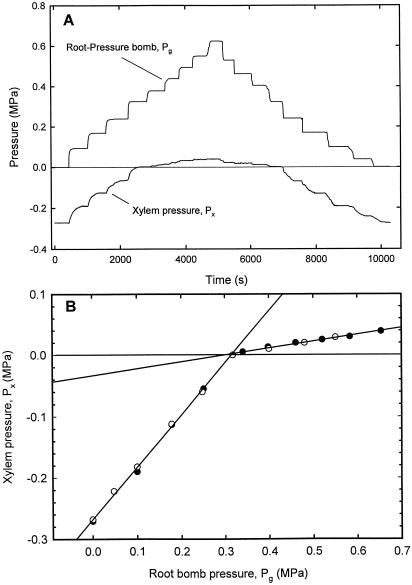Figure 5.
Effect of Pg applied to the root on xylem pressure, Px. A, At 0 (atmospheric) pressure, xylem pressure was Px = −0.28 MPa. As the bomb pressure was raised in steps, xylem pressure increased in steps, too. Responses to bomb pressure were on the order of seconds (see Fig. 3). In the range of xylem pressures of below atmospheric, there was a substantial response of xylem pressure. This was strongly reduced when Px was larger than atmospheric pressure and guttation occurred. B, Effect of Pg applied to a maize root on steady Px: plot of data from an experiment such as that shown in A. White and black circles represent the step-up and step-down of Pg, respectively. Responses were linear in both the ranges of low and high pressures. Guttation occurred when Px attained a certain threshold (Px ≥ atmospheric pressure which was the reference). There was a nearly 1:1 response of Px:Pg at low pressures (ΔPx slightly smaller than ΔPg; slope = 0.852; r2 = 0.998). At pressures where guttation occurred, the slope was only 0.112. This indicated a substantial reduction of the hydraulic resistance across the plant when hydaothodes allowed the passage of water.

